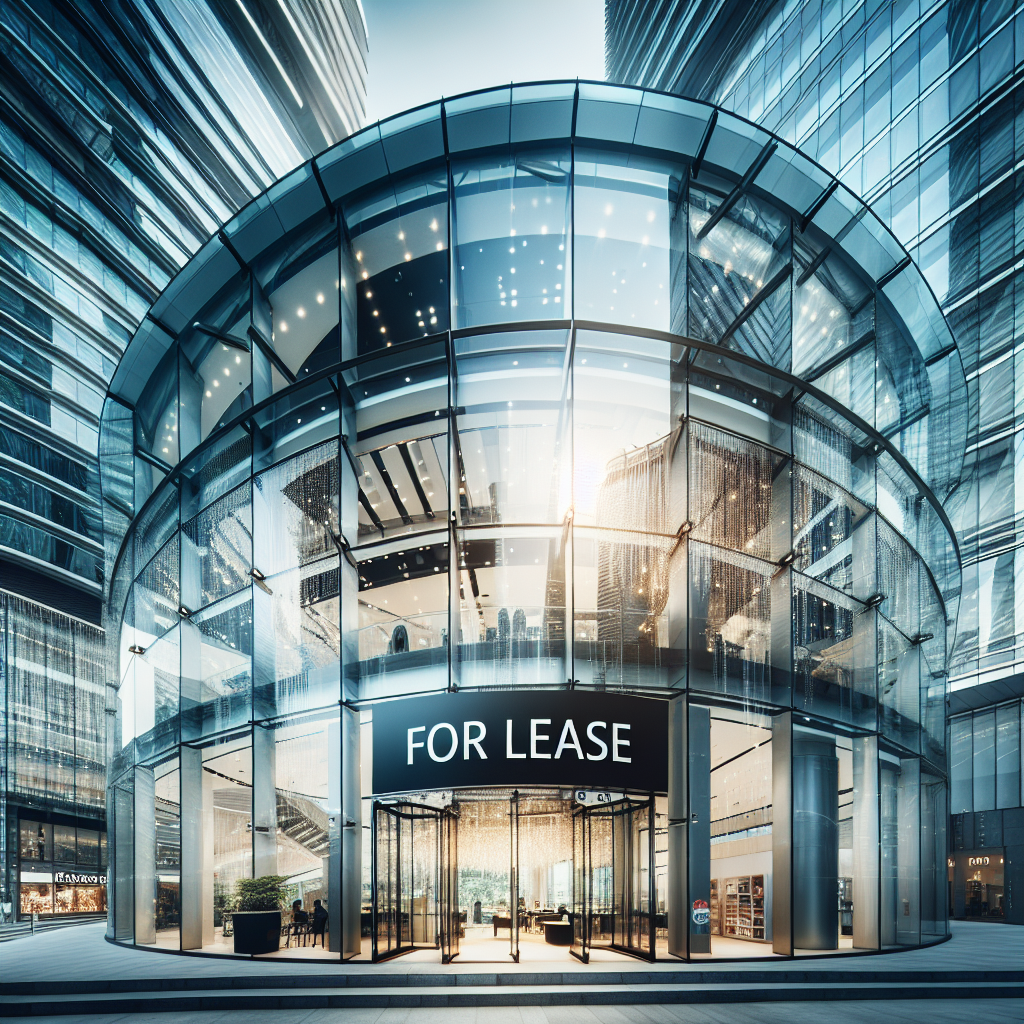Have you ever considered the possibility of your retirement fund owning your business premises while you pay rent to yourself? This strategic approach is possible through a Self-Managed Super Fund (SMSF) investment in business real property. For business owners and entrepreneurs looking to maximize their retirement savings while securing their operational base, this option deserves serious consideration.
What is Business Real Property in the SMSF Context?
Business real property within an SMSF context refers to land and buildings used wholly and exclusively in a business. According to the Superannuation Industry Supervision Act, this typically includes commercial premises such as:
- Office spaces
- Retail shops
- Warehouses and factories
- Agricultural land used for farming
- Medical centers and professional suites
It’s important to note that the property must maintain its “business real property” status by being used exclusively for business purposes. Residential properties generally don’t qualify unless they’re part of a genuine accommodation business, such as a hotel or motel.
The key distinction is that business real property can be acquired from SMSF members or related parties at market value, which creates unique opportunities for business owners who already own their commercial premises or are looking to purchase them.
Understanding Self-Managed Super Funds (SMSFs)
An SMSF is a private superannuation fund that you manage yourself, giving you direct control over investment decisions for your retirement savings. Unlike industry or retail super funds, SMSFs allow trustees (who are also typically the fund members) to determine exactly where and how their retirement funds are invested.
SMSFs can have up to six members, all of whom generally act as trustees. These funds operate under strict regulatory guidelines set by the Australian Taxation Office (ATO) and must comply with the sole purpose test – ensuring the fund exists exclusively to provide retirement benefits to members.
What makes SMSFs particularly attractive for property investors is the ability to include real estate in the investment portfolio, including business real property. This creates a powerful opportunity to combine business operations with retirement planning in a tax-effective structure.
Benefits of Purchasing Business Premises Through an SMSF
Tax Advantages
The tax benefits of holding business real property in your SMSF are compelling:
- Rental income is taxed at the concessional super rate of only 15%, significantly lower than personal income tax rates that can reach up to 45%.
- For properties held longer than 12 months, capital gains receive a one-third discount, effectively reducing the tax rate to just 10%.
- Once fund members reach retirement phase, both rental income and capital gains may potentially be tax-free.
- Business rent payments are generally tax-deductible for your business, while simultaneously building your retirement savings.
As one financial advisor puts it, “You’re essentially redirecting money that would otherwise go to the tax office into your own retirement fund.”
Asset Protection
Another significant benefit is asset protection. Business real property held within an SMSF is generally protected from creditors in the event of business failure or personal bankruptcy. This creates a secure separation between your business operations and the valuable property asset.
This protection can be crucial for business owners who face various operational risks. By placing their business premises in an SMSF, they create a safeguard for this significant asset while continuing to utilize it for business purposes.
Control Over Investments
Unlike mainstream superannuation funds, an SMSF gives trustees complete control over investment decisions. This means you can:
- Select the exact property that best serves your business needs
- Negotiate lease terms that work for both your business and your SMSF
- Make improvements to the property that enhance its value and functionality
- Time purchase and sale decisions according to your business and retirement plans
For many business owners, this level of control is invaluable, allowing them to align their business operations with their retirement planning.
Potential for Higher Returns
Commercial properties typically offer higher rental yields compared to residential properties, often between 5-10% versus 2-4% for residential investments. This makes business real property an attractive option for generating steady retirement income.
Additionally, commercial leases tend to be longer-term (often 3-5 years or more), providing stable income streams for the SMSF. These leases usually include provisions for regular rent increases, helping to hedge against inflation and ensure growing returns.
Compliance Requirements for SMSF Property Purchases
The Sole Purpose Test
Any investment within an SMSF must satisfy the “sole purpose test” – meaning it must be maintained solely to provide retirement benefits to fund members. When purchasing business real property, trustees must ensure the investment decision is made with this primary purpose in mind, not just to benefit the related business.
Arm’s Length Transactions
All transactions involving the SMSF must be conducted on commercial terms at market rates. This means:
- The property must be purchased at market value, supported by independent valuation
- Rent must be set at market rates and reviewed regularly
- Lease terms must reflect standard commercial arrangements
- Rent must be paid on time and in full, just like any other tenant-landlord relationship
The ATO closely monitors related-party transactions, making proper documentation essential. As one SMSF auditor notes, “Many SMSF trustees assume they can be flexible with rental payments because they’re effectively paying themselves, but this is where many funds fail compliance checks.”
In-House Asset Rules
While SMSFs generally cannot invest more than 5% of their assets in in-house assets (investments involving related parties), business real property is a specific exception to this rule. This exception makes it possible for your SMSF to purchase your business premises and lease it back to your business.
However, it’s crucial that the property maintains its status as business real property. Any change in use could trigger compliance issues.
Borrowing Restrictions
If your SMSF needs to borrow funds to purchase the property, this must be done through a limited recourse borrowing arrangement (LRBA). These specialized loan structures have specific requirements:
- The loan can only be used to purchase a single acquirable asset
- The asset is held in a separate holding trust until the loan is repaid
- Lender’s recourse is limited to the specific asset being purchased (not other SMSF assets)
- Initial repairs and maintenance are permitted, but significant improvements are restricted while the loan exists
These restrictions make SMSF borrowing more complex than standard property loans, requiring specialized lenders and proper structuring.
Costs Associated with SMSF Property Purchases
Setup Costs
Establishing the right structure for business real property investment involves several upfront costs:
- SMSF establishment fees (if you don’t already have an SMSF): $1,000-$2,000
- Legal documentation for the SMSF trust deed: $500-$1,500
- Property conveyancing and legal fees: $1,000-$3,000
- Loan establishment fees (if borrowing): $1,000-$5,000
- Stamp duty on property purchase: varies significantly by state and property value
- Property valuation fees: $500-$2,000
For a $500,000 commercial property purchase, these initial costs could total $20,000-$30,000, representing a significant investment before considering the property itself.
Ongoing Administrative Expenses
Running an SMSF with property assets requires consistent administration:
- Annual SMSF audit fees: $500-$2,000
- Accounting and tax return preparation: $1,500-$3,500
- ATO supervisory levy: currently $259 per annum
- Property management fees (if outsourced): 5-8% of rental income
- Insurance premiums for building insurance: varies based on property type and value
- Loan repayments (if applicable): depends on loan amount, term and interest rate
These ongoing costs must be factored into your investment calculations to determine the true return on your business real property investment.
Property-Related Fees
Don’t overlook the specific costs related to commercial property ownership:
- Council rates and water charges
- Land tax (which applies to commercial properties)
- Building maintenance and repairs
- Potential capital expenditure for improvements
- Compliance costs related to commercial building regulations
Most lenders who specialize in SMSF property loans require higher deposits compared to standard mortgages, typically 30-40% of the property value. With Aries Financial’s competitive SMSF loan solutions starting from 5.99% PI, SMSF trustees can access specialized financing that understands the unique requirements of SMSF lending compliance.
Risks to Consider
Market Fluctuations
Commercial property markets can be volatile and less liquid than residential property. During economic downturns, commercial vacancies typically increase, potentially leaving your SMSF without rental income if your business struggles or closes.
Additionally, commercial property values may not appreciate at the same rate as residential property in some areas. Trustees must carefully consider location, property type, and long-term economic trends when making investment decisions.
Regulatory Changes
The superannuation landscape in Australia is subject to policy changes with each new government. Future regulatory adjustments could impact the tax benefits or compliance requirements for business real property held in SMSFs.
The Australian Taxation Office has previously warned investors about over-investing in property within SMSFs, highlighting potential regulatory scrutiny in this area. Staying informed about potential changes is critical for long-term planning.
Concentration Risk
Investing a significant portion of your retirement savings in a single asset creates concentration risk. If your SMSF purchases your business premises and the property represents a large percentage of fund assets, your retirement security becomes heavily dependent on both the property market and the viability of your business.
As one financial planner cautions, “Many business owners emotionally connect their business success with property value, but these don’t always move in tandem. Diversification remains important even when implementing this strategy.”
Cash Flow Challenges
Your SMSF must maintain sufficient liquidity to meet ongoing expenses and future pension payments. A property investment consumes a large portion of fund assets, potentially creating cash flow challenges, especially if:
- The business struggles to pay rent consistently
- The property requires unexpected major repairs
- Loan repayments become difficult to service
- Fund members approach retirement age and need pension payments
Proper cash flow planning is essential when implementing this strategy.
Strategic Perspective: Is Business Real Property Right for Your SMSF?
Business real property investment through an SMSF represents a sophisticated strategy that can deliver significant benefits when implemented correctly. However, it requires careful planning, strict compliance with regulations, and ongoing management to maximize advantages while mitigating risks.
Before proceeding, consider these strategic questions:
1. Does the investment align with your fund’s investment strategy and the sole purpose test?
2. Is your business stable enough to maintain rental payments even during challenging periods?
3. Do you have sufficient assets in your SMSF to maintain diversification after the property purchase?
4. Have you considered succession planning if you intend to sell or exit your business before retirement?
5. Can your SMSF meet all compliance requirements without putting your retirement savings at risk?
Working with specialists who understand both SMSF regulations and commercial property investments is essential. At Aries Financial, we specialize exclusively in SMSF financing, offering competitive loan solutions with fast approvals within 1-3 business days. Our expertise in SMSF lending compliance makes us a trusted partner for those looking to leverage their retirement investments through property acquisition.
The strategy of owning your business premises through your SMSF and paying yourself rent combines business planning with retirement preparation in a powerful way. When implemented with integrity and expertise, it can significantly enhance your long-term financial security while providing immediate benefits to your business operations.
Remember that every business and SMSF situation is unique. The right approach depends on your specific circumstances, business type, property market conditions, and retirement timeframe. With proper guidance and careful planning, business real property can become a cornerstone of both your business success and retirement security.


